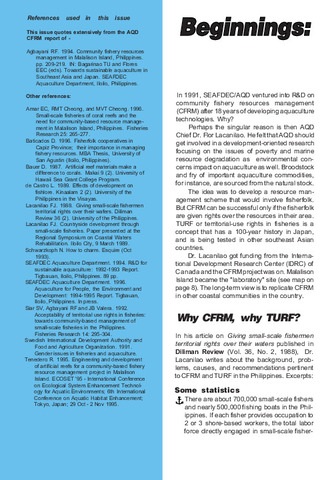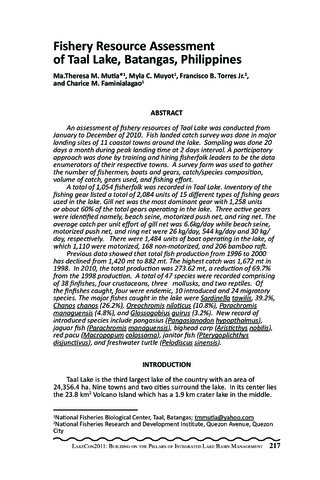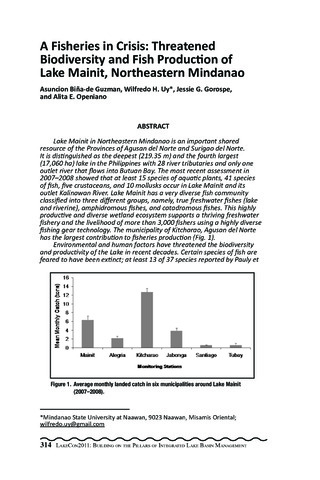CRM in the Philippines: Lessons learned
- Global styles
- MLA
- Vancouver
- Elsevier - Harvard
- APA
- Help

Date
1996Page views
3,403ASFA keyword
marine environment 
coastal fisheries
coastal zone management
community planning
fisheries development
fishery policies
fishery regulations
fishery resources
fishing effort
fishing gear
fishing rights
fishing communities
illegal fishing
resource management
socioeconomic aspects
sociology
sport fishing

coastal fisheries

coastal zone management

community planning

fisheries development

fishery policies

fishery regulations

fishery resources

fishing effort

fishing gear

fishing rights

fishing communities

illegal fishing

resource management

socioeconomic aspects

sociology

sport fishing

AGROVOC keyword
Metadata
Perlihat publikasi penuhShare
Abstract
Philippine coastal communities can become capable fishery resource managers and that their management practices can become largely self-sustaining if the project approach focuses on assisting fishermen to learn how to help themselves. Community organization is an essential part of the process and should not be viewed as an end product in itself. There are also no quick fixes, and projects require a complex array of activities if large numbers of coastal residents are to be assisted. In some of these projects, the control of illegal fishing combined with limiting of commercial fishing to offshore areas and good coastal habitat management resulted in a doubling of daily fish catch and income for small-scale fishermen. However, even with the best of management, the total fishery harvest is limited and further increases in individual fishing income can only come from reducing total fishing effort. This will require a system of control on access to the resource to limit the number and kind of fishing gears and to divide the resource equitably. Assisting coastal communities to devise and implement realistic equitable access controls is the major challenge facing coastal resource co-management.
Suggested Citation
SEAFDEC/AQD (1996). CRM in the Philippines: Lessons learned. Aqua Farm News , 14(2-3), 26-30. http://hdl.handle.net/10862/2427
Type
magazineArticleISSN
0116-6573Koleksi
- Aqua Farm News [286]
Related items
Showing items related by title, author, creator and subject.
-
Beginnings: SEAFDEC/AQD, CFRM, and Malalison Island
Southeast Asian Fisheries Development Center, Aquaculture Department (Aquaculture Department, Southeast Asian Fisheries Development Center, 1996)The paper documents the community fishery resources management activities of Southeast Asian Fisheries Development Center, Aquaculture Department (SEAFDEC/AQD) in Malalison Island, Antique, Philippines. -
Series: Summary of Proceedings No. 1/2013;
Fishery resource assessment of Taal Lake, Batangas, Philippines
Mutia, Ma. Theresa M.; Muyot, Myla C.; Torres Jr., Francisco B.; Faminialagao, Charice M. (PCAARRD-DOST, 2013)An assessment of fishery resources of Taal Lake was conducted from January to December of 2010. Fish landed catch survey was done in major landing sites of 11 coastal towns around the lake. Sampling was done 20 days a month ... -
Series: Summary of Proceedings No. 1/2013;
A fisheries in crisis: Threatened biodiversity and fish production of Lake Mainit, northeastern Mindanao
Biña-de Guzman, Asuncion; Uy, Wilfredo H.; Gorospe, Jessie G.; Openiano, Alita E. (PCAARRD-DOST, 2013)Lake Mainit in Northeastern Mindanao is an important shared resource of the Provinces of Agusan del Norte and Surigao del Norte. It is distinguished as the deepest (219.35 m) and the fourth largest (17,060 ha) lake in the ...




